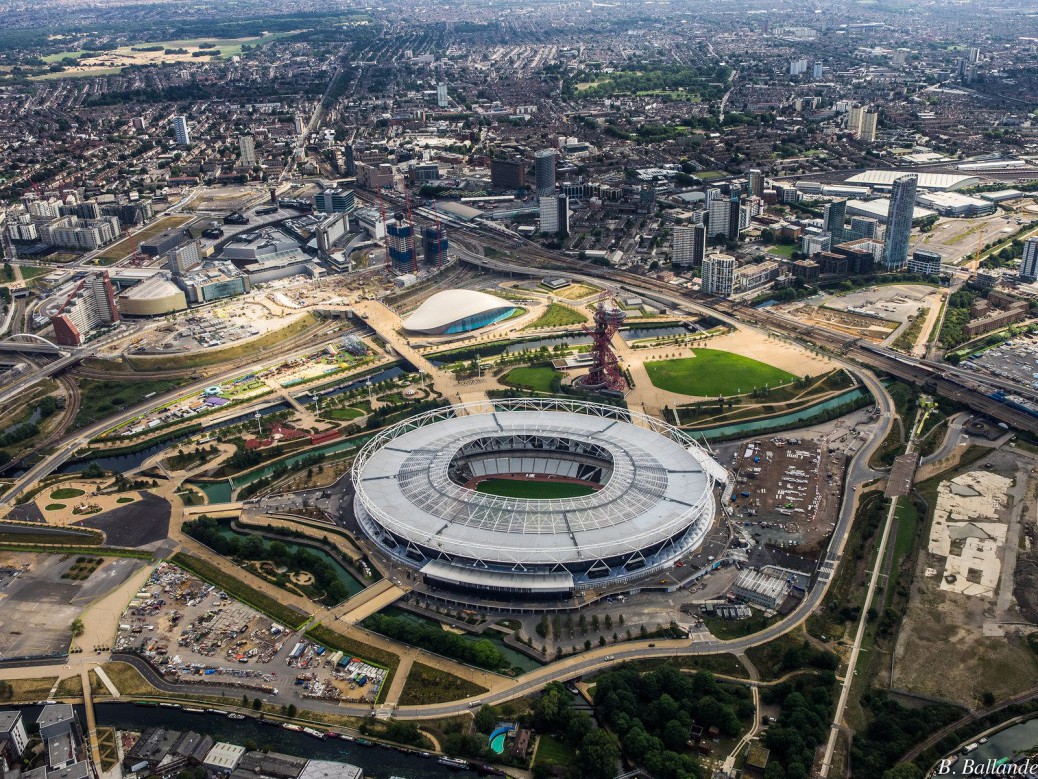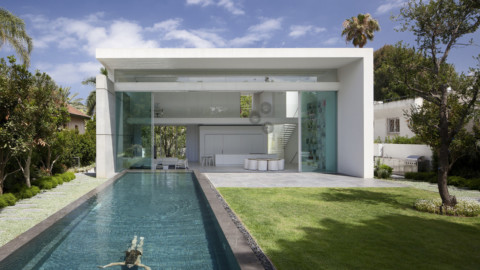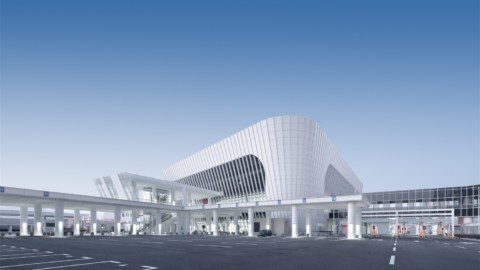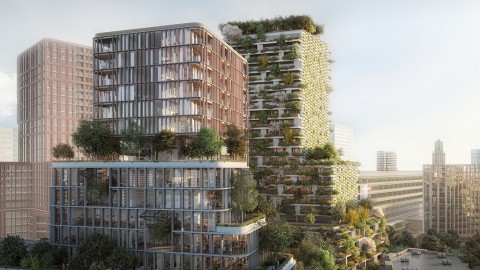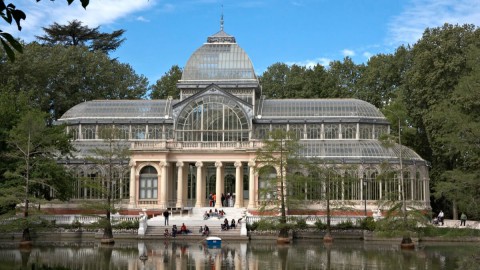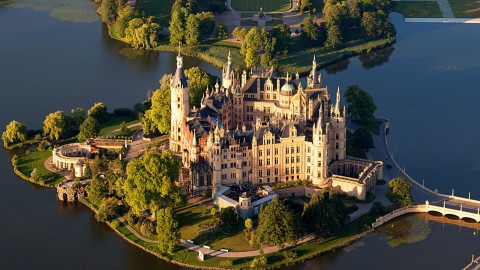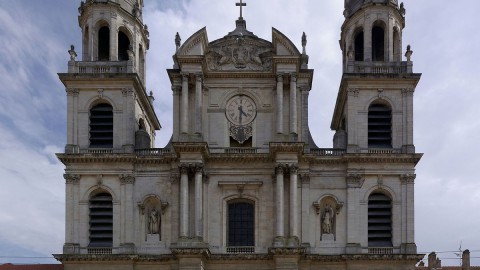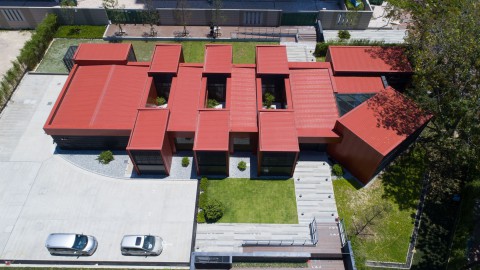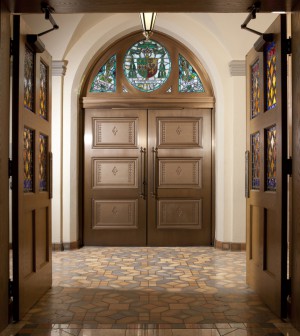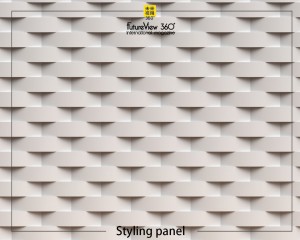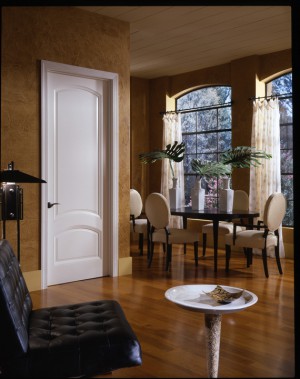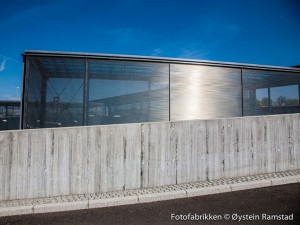London Stadium 倫敦體育場
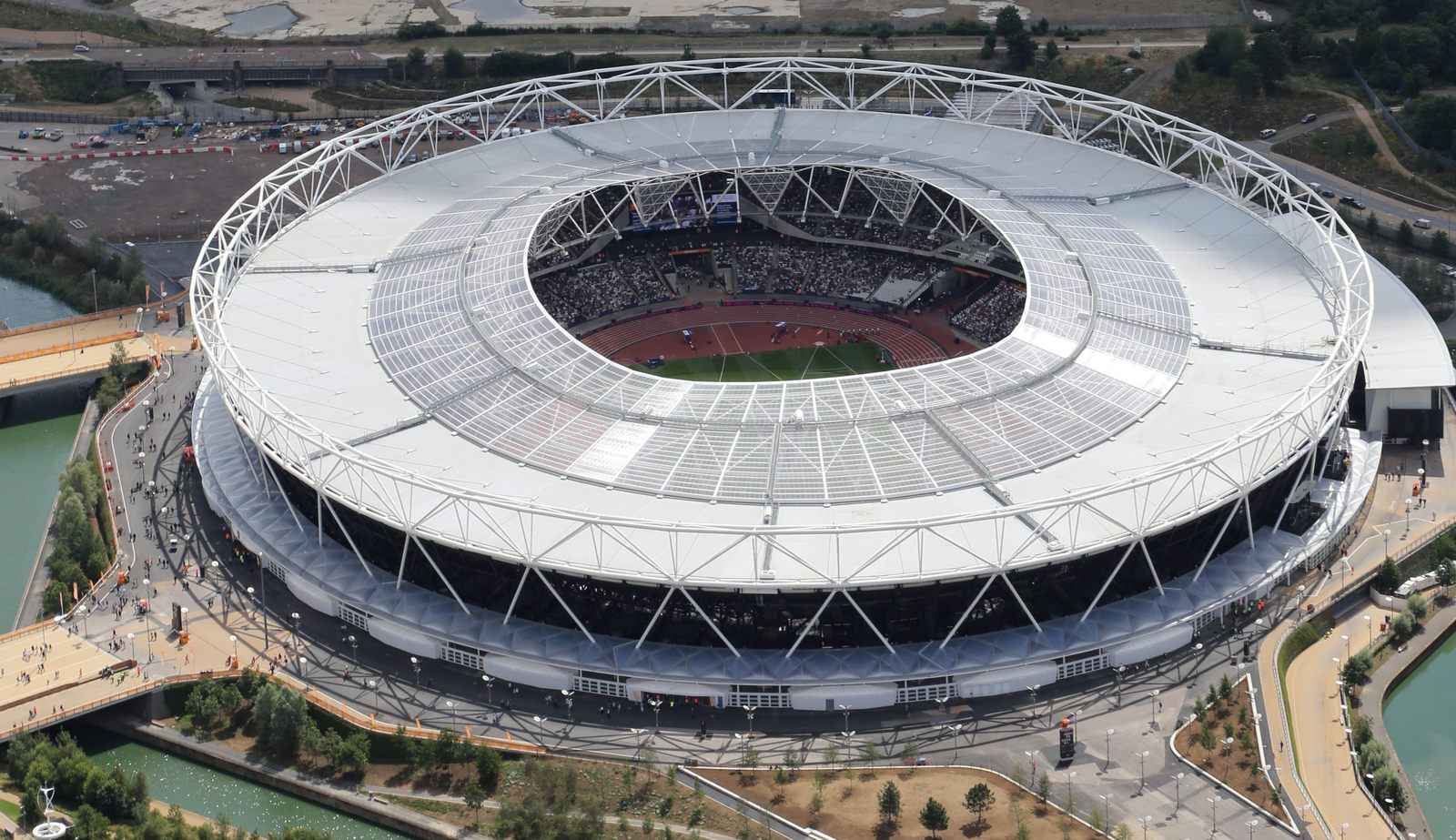
London Stadium (formerly and also known as Olympic Stadium and The Stadium at Queen Elizabeth Olympic Park) is a multi-purpose outdoor stadium at Queen Elizabeth Olympic Park in the Stratford district of London. It was constructed for the 2012 Summer Olympics and 2012 Summer Paralympics—serving as the track and field venue, and as the site of their opening and closing ceremonies. Following the Games, the stadium was subsequently renovated as a multi-purpose stadium and now serves primarily as the home of West Ham United of the Premier League.
Land preparation for the stadium began in mid-2007, with the official construction start date on 22 May 2008. The stadium held its first public event in March 2012, serving as the finish line for a celebrity run organised by the National Lottery. Holding 80,000 for the Olympics and the Paralympics, the stadium re-opened in July 2016 with 66,000 seats, but with capacity for football limited to 60,000 under the terms of the lease. The decision to make West Ham United the main tenants was controversial, with the initial tenancy process having to be rerun.
The stadium hosted several 2015 Rugby World Cup matches, two England rugby league Test matches, and the 2017 IAAF World Championships in Athletics and 2017 World Para Athletics Championships (the first time both events had been held in the same location in the same year). The stadium can also hold concerts with up to 80,000 spectators, and, due to its oval shape and relocatable seating, was deemed to potentially be suitable for other sporting events such as baseball and cricket.
倫敦體育場(前身為奧林匹克體育場和伊麗莎白女王奧林匹克公園體育場)是倫敦斯特拉特福德區伊麗莎白女王奧林匹克公園的多功能戶外體育場。它是為2012年夏季奧運會和2012年夏季殘奧會而建造的 – 作為田徑場地,以及他們的開幕式和閉幕式。奧運會結束後,體育場隨後作為一個多功能體育場進行了翻新,現在主要作為英超聯賽西漢姆聯隊的主場。
體育場的土地準備工作於2007年年中開始,官方建設開始日期為2008年5月22日。體育場於2012年3月舉行了第一次公共活動,作為國家彩票組織的名人競選終點線。該體育場為奧運會和殘奧會舉辦了8萬場比賽,於2016年7月重新開放,擁有66,000個座位,但根據租約條款,足球容量限制為60,000。將西漢姆聯隊作為主要租戶的決定是有爭議的,最初的租賃過程必須重新運行。
該體育場舉辦了幾場2015年橄欖球世界杯比賽,兩場英格蘭橄欖球聯盟測試賽,以及2017年田徑世界田徑錦標賽和2017年世界田徑錦標賽(這兩項賽事首次在同一地點舉行)。體育場還可以舉辦多達80,000名觀眾的音樂會,由於其橢圓形狀和可重新定位的座位,被認為可能適合其他體育賽事,如棒球和板球。
Former names:
Olympic Stadium (2012)
The Stadium at Queen Elizabeth Olympic Park (2013–16)
Location:Queen Elizabeth Olympic Park, Stratford
London, E20
Coordinates:51°32′19″N 0°00′59″WCoordinates: 51°32′19″N 0°00′59″W
Public transit:London Underground London Overground Crossrail Docklands Light Railway National Rail Stratford
Docklands Light Railway National Rail Stratford International
Owner:E20 Stadium, LLP
Operator:London Stadium 185 Ltd.
Capacity:
60,000 (regulated capacity) 66,000 (seated capacity) (Sports)
79,990 (Concerts)
Field size:115 by 74 yards (105 by 68 m)
Surface:Grass (Desso GrassMaster)
Track (Mondotrack/WS, 9 Lanes)
Construction
Broke ground:22 May 2008
Built:22 May 2008 – 29 March 2011
Opened:6 May 2012
Renovated:2013–2016
Construction cost:£486 million
(£662 million in 2019 pounds)
£274 million (2013–16 renovations)
Architect:Populous led by Philip Johnson
Project manager Savills
Structural engineer:Buro Happold
Services engineer:M-E Engineers
General contractor:Balfour Beatty
Main contractors Sir Robert McAlpine
Tenants
UK Athletics (2015–present)
West Ham United (2016–present)
原名:
奧林匹克體育場(2012)
伊麗莎白女王奧林匹克公園體育場(2013-16)
地點:伊麗莎白女王奧林匹克公園,斯特拉特福
倫敦,E20
坐標:51°32’19“N 0°00’59”WCoordinates:51°32’19“N 0°00’59”W
公共交通:倫敦地鐵倫敦Overground Crossrail碼頭區輕軌鐵路國家鐵路斯特拉特福德
碼頭區輕軌國家鐵路斯特拉特福國際
所有者:E20 Stadium,LLP
接線員:London Stadium 185 Ltd.
容量:
60,000(規定容量)66,000(就座容量)(運動)
79,990(音樂會)
場地大小:115乘74碼(105乘68米)
表面:草(Desso GrassMaster)
賽道(Mondotrack / WS,9 Lanes)
施工
破土動工:2008年5月22日
建成時間:2008年5月22日 – 2011年3月29日
開業時間:2012年5月6日
裝修:2013-2016
建設成本:4.86億英鎊
(2019英鎊的6.62億英鎊)
2.74億英鎊(2013-16翻新)
建築師:Philip Philip領導的Populous
項目經理Savills
結構工程師:Buro Happold
服務工程師:M-E工程師
總承包商:Balfour Beatty
主要承包商Robert McAlpine爵士
租戶
英國田徑(2015年至今)
西漢姆聯隊(2016年至今)
Design and construction
Olympic design
Design brief
During London’s bid for the games, promotional materials featured a main stadium with a roof “designed to wrap itself around the venue like muscles supporting the body”, however at that time there had been no formal design brief agreed. While the bidding process was ongoing West Ham had talks with the ODA about contributing to the development of a multi-purpose stadium, should London win the bid. The government preferred to produce a brief for an athletics only stadium which would be largely disassembled after the games with the lower tier remaining in place as a permanent athletics facility to replace the Crystal Palace National Sports Centre. With the original Olympic design finalised and being built, the government had a change of heart and a bidding process for a multi-sport post-Olympic legacy was launched.
On 13 October 2006, London Organising Committee of the Olympic and Paralympic Games confirmed that it had selected Sir Robert McAlpine and Populous to start exclusive negotiations with, to fulfil the eventual design and build contract of the new Olympic Stadium after no other organisations met the bidding criteria. The stadium design was launched on 7 November 2007.
Original structure details
The construction of the stadium commenced three months early in May 2008 after the bowl of the stadium had been dug out and the area cleared. The building of the stadium was completed in March 2011 reportedly on time and under budget, with the athletics track laid in October 2011.
The stadium’s track and field arena is excavated out of the soft clay found on the site, around which is permanent seating for 25,000, built using concrete “rakers”. The natural slope of the land is incorporated into the design, with warm-up and changing areas dug into a semi-basement position at the lower end. Spectators enter the stadium via a podium level, which is level with the top of the permanent seating bowl. A demountable lightweight steel and pre-cast concrete upper tier was built up from this “bowl” to accommodate a further 55,000 spectators.
The stadium is made up of different tiers; during the Games the stadium was able to hold 80,000 spectators. The base tier, which allows for 25,000 seats, is a sunken elliptical bowl that is made up of low-carbon-dioxide concrete; this contains 40 percent less embodied carbon than conventional concrete. The foundation of the base level is 5,000 piles reaching up to 20 metres (66 ft) deep. From there, there is a mixture of driven cast in situ piles, continuous flight auger piles, and vibro concrete columns. The second tier, which holds 55,000 seats, is 315 m (1,033 ft) long, 256 m (840 ft) wide, and 60 m (197 ft) high. The stadium contains just under a quarter of the steel as the Olympic Stadium in Beijing for the 2008 Summer Olympics, approximately 10,700 tonnes (11,800 short tons). In addition to the minimal use of steel, which makes it 75 percent lighter, the stadium also uses high-yield large diameter pipes which were surplus on completion of North Sea Gas pipeline projects in its compression truss, recycled granite, and many of the building products were transported using trains and barges rather than by lorry.
A wrap, funded by Dow Chemical Company in return for being able to advertise on the wrap until 26 June 2012, covered the exterior during the Olympics. The wrap was made from polyester and polyethylene, and printed using UV curable inks. The wrap was made of pieces of material that covered 20 metres (66 ft) high and 900 metres (1,000 yd) in length. The final design for the wrap consisted of 2.5-metre-wide (8 ft) fabric panels, twisted at 90-degree angles to allow entry to the stadium at the bottom of the structure, and held in place with tensioned cables.
To allow for fast on-site assembly, compression truss and roof column connections were bolted; this enabled easy disassembling of the roof structure after the closing ceremonies. The cable-supported roof structure covers approximately two-thirds of the stadium’s seating. Reaching 70 metres (230 ft) above the field of play, the stadium roof held 14 lighting towers, or paddles, that collectively contained a total of 532 individual 2 kW floodlight lamps. The lights were first officially switched on in December 2010 by Prime Minister David Cameron and London Mayor Boris Johnson. During the games, the towers were fitted with additional ceremony lighting, and 4 of the 14 towers held large temporary video screens.
設計和施工
奧運設計
設計簡介
在倫敦申辦奧運會期間,宣傳材料展示了一個主體育場,屋頂“設計為圍繞場地包裹,就像支撐身體的肌肉一樣”,但當時並沒有商定正式的設計簡報。雖然招標過程正在進行中,但是西漢姆與官方發展援助有關為多功能體育場的發展做出貢獻的談判,倫敦應該中標。政府傾向於為僅限運動的體育場製作一份簡報,該體育場將在較低級別的比賽后基本上被拆解,作為替代水晶宮國家體育中心的永久性運動設施。隨著最初的奧林匹克設計的最終確定和建設,政府改變了主意,並啟動了多項體育後奧運遺產的招標程序。
2006年10月13日,倫敦奧林匹克運動會和殘奧會組委會確認,在沒有其他組織參加競標後,選擇了羅伯特麥卡爾平和人口眾多,以便與新奧林匹克體育場的最終設計和建造合同展開獨家談判。標準。體育場設計於2007年11月7日啟動。
原始結構細節
體育場的建設在2008年5月初開始,在體育場的碗被挖出並且區域被清理之後。據報導,2011年3月,體育場的建設按時完成,預算不足,2011年10月開設了田徑跑道。
體育場的田徑競技場是從現場發現的軟粘土中挖掘出來的,周圍有25,000個永久座位,使用混凝土“耙子”建造。土地的自然坡度被納入設計中,預熱和變化區域挖到下端的半地下室位置。觀眾通過平台進入體育場,該平台與永久座位碗的頂部齊平。從這個“碗”建造了一個可拆卸的輕質鋼和預製混凝土上層,以容納另外55,000名觀眾。
體育場由不同的層組成;在奧運會期間,體育場能夠容納80,000名觀眾。基層,允許25,000個座位,是一個沉沒的橢圓形碗,由低二氧化碳混凝土組成;與傳統混凝土相比,其含碳量減少了40%。基層的基礎是5,000樁,深達20米(66英尺)。從那裡,有一個驅動的鑄造原位樁,連續螺旋鑽樁和振動混凝土柱的混合物。第二層擁有55,000個座位,長315米(1,033英尺),寬256米(840英尺),高60米(197英尺)。該體育場僅有不到四分之一的鋼鐵作為2008年夏季奧運會的北京奧林匹克體育場,約10,700噸(11,800短噸)。除了最低限度使用鋼材,使其重量減輕75%之外,體育場還採用了高產量大直徑管道,這些管道在壓縮桁架,再生花崗岩和許多建築物的北海天然氣管道工程完工後都是盈餘的。產品是用火車和駁船運輸而不是用卡車運輸的。
由陶氏化學公司(Dow Chemical Company)資助的包裝,以換取能夠在2012年6月26日之前在包裝上做廣告,在奧運會期間覆蓋了外觀。包裹物由聚酯和聚乙烯製成,並使用UV固化油墨印刷。包裹物由高20米(66英尺),長900米(1000碼)的材料製成。包裹的最終設計包括2.5米寬(8英尺)的織物面板,以90度角扭曲,以允許進入結構底部的體育場,並用張緊的電纜固定。
為了實現快速的現場組裝,壓縮桁架和頂柱連接用螺栓固定;這使得在閉幕式後能夠輕鬆拆卸屋頂結構。電纜支撐的屋頂結構覆蓋了體育場座位的大約三分之二。體育場屋頂高出球場70米(230英尺),擁有14個照明塔或槳,共有532個單獨的2千瓦泛光燈。 2010年12月首相大衛卡梅倫和倫敦市長鮑里斯約翰遜首次正式啟用了這些燈。在比賽期間,塔樓配備了額外的儀式照明,14座塔樓中的4座設有大型臨時視頻屏幕。
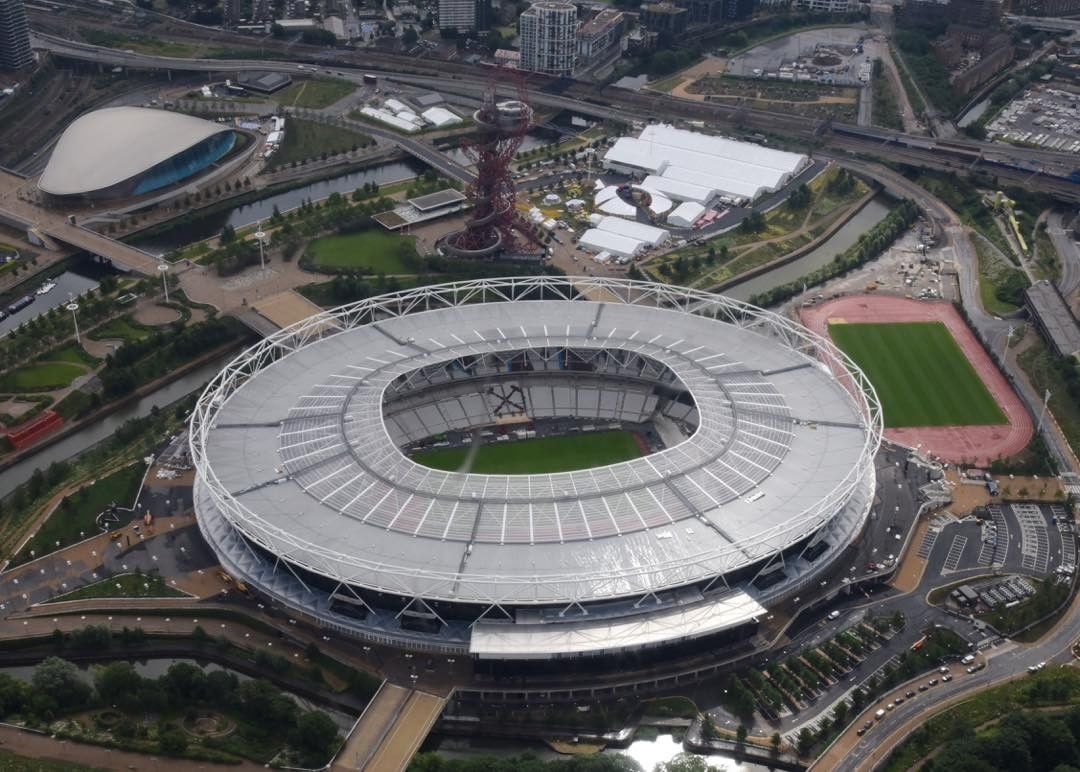
Stadium interior
The stadium was equipped with a nine lane Mondo 400 metres (1,300 feet) athletics track.The turf in the stadium was grown in Scunthorpe and was a mix of perennial ryegrass, smooth stalk meadow grass and fescue grass seeds. It took 360 rolls of grass to cover the infield and was laid in March 2011. The track was designed by Italian company Mondo, and was their latest version of the Mondotrack FTX.
The stadium’s 80,000 seats had a black and white ‘fragment’ theme that matched the overall branding design used by LOCOG for London 2012. The lines all centred on the finish line in the stadium. The seats were made in Luton and were fitted between May and December 2010. During the Games, the Stadium’s grandstands contained a lighting system developed by Tait Technologies that allowed them to function as a giant video screen. Individual “paddles” containing nine LED pixels each were installed between each seat of the stadium, which were controlled via a central system to display video content wrapped around the stadium. The system was primarily intended for use during the ceremonies of the Olympics and Paralympics – over 70 minutes of animated content were used during the Olympics’ opening ceremony.
Playing surface
The red Mondo 400-metre athletics track used for the London 2012 games was laid in August 2011, possessed nine lanes, and was 13.5 mm (0.5 in) thick. It used two vulcanised rubber layers, one of which was a cushioning underside with elongated diamond-shaped cells, which allowed them to flex in any direction. During the four London 2012 ceremonies, the track was protected via synthetic covering. For the stadium’s transformation, the track was protected from construction work for the 2015 events by covering it with a plastic sheet layer and burying it under 75 cm (30 in) of soil. The Mondotrack surface was removed in early 2016 and a new surface, using 17,000 sqm of the improved Mondotrack/WS, was laid that May. Some of the original running track from (mainly) the home straight was kept so that it could be sold and auctioned to the public, thereby raising money to reinvest into operating the stadium and its neighbouring community track. The grass playing field was lengthened by several metres at either end for the 2015 rugby matches to fit a suitably-sized rugby/football pitch, and was reseeded with a Desso GrassMaster artificial-natural hybrid pitch approved for Premier league matches of 105 by 68 metres (115 by 74 yd), ready for West Ham United, complete with undersoil heating. In football/pitch mode, the pitch is surrounded by artificial turf and carpeting that covers the exposed sections of the running track.
Response
The stadium design received a mixed response from the media, with reviews ranging from “magnificent” to a “bowl of blancmange”. The design was promoted as example of “sustainable development”, but some architecture critics have questioned both its aesthetic value and suitability as a national icon – especially when compared with Beijing National Stadium. For example, Ellis Woodman, Building Design’s architecture critic, said of the design: “The principle of it being dismountable is most welcome… it demonstrates an obvious interest in establishing an economy of means and as such is the antithesis of the 2008 Olympic stadium in Beijing. But while that’s an achievement, it’s not an architectural achievement. In design terms what we’re looking at is pretty underwhelming.” He went on to criticise the procurement and design processes – stating of the latter that it should have been subject to an architectural competition. This view was echoed by Tom Dyckhoff, The Times’s architecture critic, who described the design as “tragically underwhelming” and commented that the “architecture of the 2008 and 2012 Olympics will, in years to come, be seen by historians as a “cunning indicator of the decline of the West and the rise of the East”. Despite the criticism the Olympic Stadium was nominated for the 2012 Stirling Prize in architecture losing out to the Sainsbury Laboratory at the University of Cambridge.
Amanda Baillieu writing in Building Design challenged the designer’s claims that the stadium is environmentally sustainable and good value for money. Instead, it is asserted that the reality will be the opposite. In particular, she claimed that:
the temporary roof could not be reused to cover the permanent 25,000 seating area – given the difference in size;
it is unlikely that the removed seating would be wanted for any other event e.g. the Glasgow Commonwealth Games; and
the costs involved in dismantling the stadium – and surrounding “pods” – has not been factored into the estimated cost.
The cost of £537 million compared with the 1908 Olympic Stadium cost of £60,000 (£5.6 million in 2010).
體育場內部
體育場配備了一條九車道Mondo 400米(1,300英尺)的田徑跑道。體育場內的草坪生長在斯肯索普,是多年生黑麥草,光滑草莖草和羊茅草種子的混合物。 2011年3月,這條賽道由意大利公司Mondo設計,是最新版本的Mondotrack FTX。
體育場的80,000個座位採用了黑色和白色的“片段”主題,與倫敦2012年倫敦奧組委使用的整體品牌設計相匹配。線路全部以體育場的終點線為中心。座位在盧頓製造,並於2010年5月至12月期間安裝。在奧運會期間,體育場的看台包含由Tait Technologies開發的照明系統,使其能夠用作巨型視頻屏幕。在體育場的每個座位之間安裝包含九個LED像素的單獨“槳”,其通過中央系統控制以顯示圍繞體育場的視頻內容。該系統主要用於奧運會和殘奧會的儀式 – 在奧運會開幕式期間使用了超過70分鐘的動畫內容。
打表面
用於2012年倫敦奧運會的紅色Mondo 400米田徑跑道於2011年8月奠定,擁有9條車道,厚度為13.5毫米(0.5英寸)。它使用了兩個硫化橡膠層,其中一個是帶有細長菱形單元的緩衝底面,這使得它們可以向任何方向彎曲。在2012年倫敦舉行的四場儀式中,賽道受到合成覆蓋的保護。對於體育場的改造,通過用塑料薄膜層覆蓋並將其埋在75厘米(30英寸)的土壤中,保護了2015年賽事的建築工作。 Mondotrack表面於2016年初被拆除,並在5月份鋪設了一塊新的表面,使用了17,000平方米的改良Mondotrack / WS。來自(主要)主場直道的一些原始跑道被保留,以便可以出售和拍賣給公眾,從而籌集資金再投資到運營體育場及其鄰近的社區軌道。 2015年橄欖球比賽兩端的草地比賽場地延長了幾米,以適應足夠大小的橄欖球/足球場,並且用適用於105米乘68米的英超聯賽的Desso GrassMaster人工天然混合球場重新播種(115碼74碼),為西漢姆聯隊做好準備,完成加油。在足球/投球模式中,球場被人造草皮和地毯包圍,地毯覆蓋跑道的暴露部分。
響應
體育場的設計得到了媒體的熱烈響應,評論範圍從“華麗”到“一碗白痴”。該設計被推廣為“可持續發展”的例子,但一些建築評論家質疑其審美價值和適合性作為國家標誌 – 特別是與北京國家體育場相比。例如,建築設計的建築評論家埃利斯伍德曼談到設計時說:“它的可拆卸原則是最受歡迎的…它表明了對建立經濟手段的明顯興趣,因此是2008年奧運會的對立面北京的體育場。雖然這是一項成就,但它並不是一項建築成就。在設計方面,我們所看到的是相當平庸的。“他繼續批評採購和設計流程 – 說明後者本應該接受建築競爭。 “泰晤士報”的建築評論家湯姆·戴克霍夫(Tom Dyckhoff)對這一觀點表示贊同,他將該設計描述為“悲慘的”,並評論說“2008年和2012年奧運會的建築在未來幾年內將被歷史學家視為”狡猾的指標西方的衰落和東方的崛起“。儘管有人批評奧林匹克體育場被提名為2012年斯特林建築獎,但卻輸給了劍橋大學的塞恩斯伯里實驗室。
Amanda Baillieu在建築設計方面的寫作挑戰了設計師聲稱該體育場具有環境可持續性和物有所值的說法。相反,它斷言現實將是相反的。她特別聲稱:
由於尺寸不同,臨時屋頂不能重複使用以覆蓋永久性的25,000個座位區域;
移除的座位不太可能用於任何其他事件,例如格拉斯哥英聯邦運動會;和
拆除體育場所涉及的費用 – 以及周圍的“吊艙” – 尚未計入估計費用中。
與1908年奧林匹克體育場相比,耗資5.37億英鎊,耗資6萬英鎊(2010年為560萬英鎊)。
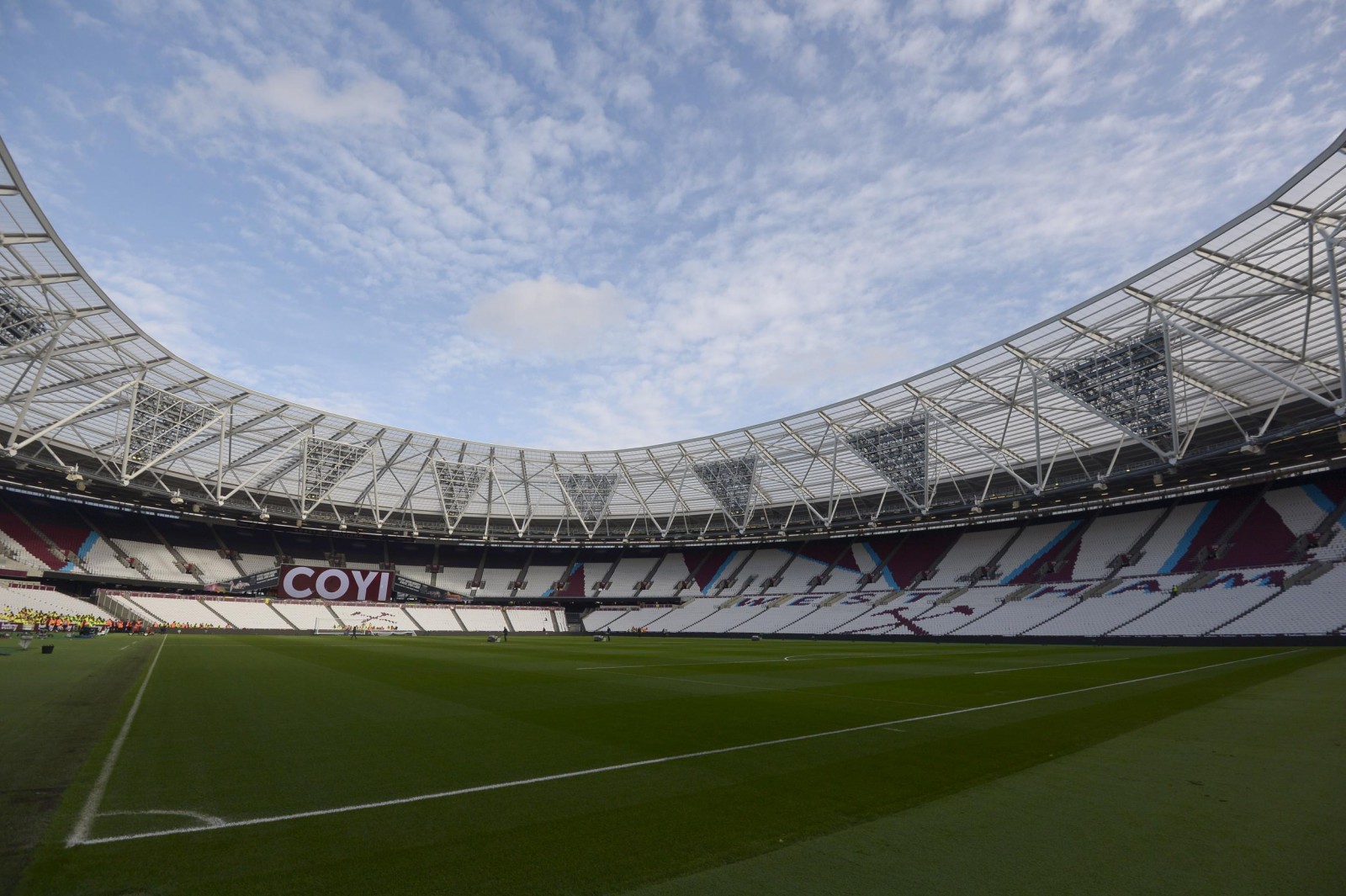
Stadium island
The stadium site is on former industrial land between the River Lea (which rejoins the Navigation below Old Ford Lock), the City Mill River, and the Old Pudding Mill River; parts of the Bow Back Rivers. Another branch of this system, St Thomas’ Creek, 200 metres (660 feet) to the south, completes an “island” surrounded by water. 200 metres (660 feet) to the east is the Waterworks River; with the London Aquatics Centre on its eastern bank. This “island” site for the stadium lies at the southern end of the Olympic Park. To make room for the stadium, the already partially obstructed Pudding Mill River, a short channel of the Lea which ran from the west side of the stadium south-eastwards across the stadium site, was filled in.
Post-Olympic redevelopment
Dennis Hone, chief executive of the LLDC, revealed in November 2012 that the stadium would not meet its reopening deadline of 2014. Instead the stadium would reopen in August 2015 with the stadium retaining a capacity of around 50,000 for athletics. Following the granting, in March 2013, of a 99-year tenancy to West Ham United, the E20 LLP, a joint organisation by the London Legacy Development Corporation and Newham Council were specifically set-up to oversee redevelopment of the stadium into a UEFA Category 4 venue seating 66,000 spectators. The reconfiguration saw work on a new roof, corporate areas, toilets, concessions and retractable seating. West Ham contributed £15 million and Newham Council £40 million for the work to be carried out with the LLDC and the British Government making up the rest. Approval was granted for the installation of retractable seating on all sides of the stadium and an 84-metre (92 yd) transparent roof.
Balfour Beatty were initially contracted to construct the new roof for £41 million; in January 2014 they were awarded a £154 million tender, which includes the earlier contract for the roof, to complete the stadium’s transformation works. Imtech G&H were awarded a £25 million contract to carry out electrical and plumbing work. Paul Kelso, working for Sky News, discovered in September 2014 that the cost of the conversion of the stadium may rise by £15 million, due to additional work to strengthen the structure, to allow it to support the new roof. It was revealed neither West Ham United nor the taxpayer would have to meet the additional cost as Balfour Beatty would contribute with the remainder funded from the existing LLDC transformation budget of the Olympic Park. In October 2014, the LLDC contributed a further £35.9 million towards the project with the funding coming from reserves and income generated by other means.
Work commenced on 13 August 2013 with the removal of 25,000 seats and the grass from the field of play. The athletics track was covered with a 75 cm (30 in) layer of recycled concrete to protect it during the heavy lifting. In November 2013 work commenced to remove the fourteen floodlight panels as part of the £200 million conversion of the stadium. In March 2015 work began on installing the new floodlights. Each floodlight panel is 18 metres (59 ft) tall and weighs 45 tonnes (50 short tons), and will sit 30 metres (98 ft) above the stadium’s floor, suspended from the roof rather than sitting on top; in total there are 14 panels. As the floodlight work began, work on a steel halo structure that encircles the stadium, containing 96 turnstiles, catering and toilet facilities, concluded.
The black and white seating design from the Olympics, was replaced with a white, blue and claret design. The new design includes West Ham’s name on the East Kop Stand and symbolic crossed hammers on all lower tier stands, and the retention of the 2012 shard design on the upper tier, albeit in new colouring to match the Stadium’s anchor tenant. Work continued through 2016 to transform the stadium into a home for West Ham, with the club’s colours and giant model West Ham shirts added to the stadium concourse. A West Ham store and coffee shop was opened on 23 June.
Community track
Following the demolition of the 2012 warm up track and to comply with IAAF rules requiring a warm up track at Construction Category 1 facilities, a new 6 lane community track (8 lanes on the straights) has been created immediately adjacent to the south of the Olympic Stadium. The track will be home to Newham and Essex Beagles Athletic Club from 2017 and will be open for around 250 days of the year. The construction of the track was funded by a grant from the London Marathon Trust.
體育場島
體育場地位於Lea河(舊福特鎖下方的航行重新加入),城市磨坊河和舊佈丁磨河之間的前工業用地上。 Bow Back Rivers的部分地區。該系統的另一個分支,St Thomas’Creek,南面200米(660英尺),完成了一個被水環繞的“島嶼”。東邊200米(660英尺)是水廠河;東岸的倫敦水上運動中心。體育場的這個“島嶼”場地位於奧林匹克公園的南端。為了為體育場騰出空間,已經部分阻塞的布丁磨河,一條從體育場西側向東南方向穿過體育場地的Lea短道被填滿。
後奧運重建
LLDC首席執行官丹尼斯·霍恩於2012年11月透露,該體育場將無法在2014年重新開放截止日期。相反,體育場將於2015年8月重新開放,體育場將保留約50,000名運動員。繼2013年3月授予西漢姆聯隊99年租約後,倫敦遺產開發公司和紐漢姆委員會聯合組織E20 LLP專門負責監督體育場重建為歐足聯類別4個場地可容納66,000名觀眾。重新配置可用於新屋頂,公司區域,廁所,特許經營和可伸縮座椅。西漢姆提供了1500萬英鎊,紐漢姆理事會提供了4000萬英鎊,用於與內陸發展委員會和英國政府共同完成的工作。批准在體育場的所有側面安裝可伸縮座椅和84米(92碼)透明屋頂。
Balfour Beatty最初簽約以4100萬英鎊建造新屋頂; 2014年1月,他們獲得了1.54億英鎊的投標,其中包括早期的屋頂合同,以完成體育場的改造工程。 Imtech G&H獲得了2500萬英鎊的合同,用於開展電氣和管道工作。為Sky News工作的Paul Kelso在2014年9月發現,體育場改建的成本可能會增加1500萬英鎊,原因是需要進一步加強結構,以支持新屋頂。據透露,西漢姆聯隊和納稅人都不需要支付額外的費用,因為Balfour Beatty將為其餘部分提供資金,其餘部分來自奧林匹克公園現有的LLDC轉型預算。 2014年10月,內陸發展中心為該項目貢獻了3590萬英鎊,資金來自儲備和其他方式產生的收入。
2013年8月13日開始工作,取消了25,000個座位和遊戲場地的草地。田徑跑道上覆蓋著一層75厘米(30英寸)的再生混凝土,以便在重物提升期間保護它。 2013年11月,作為體育場2億英鎊轉換的一部分,開始拆除十四個泛光燈板。 2015年3月開始安裝新泛光燈。每個泛光燈面板高18米(59英尺),重45噸(50短噸),位於體育場地板上方30米(98英尺)處,懸掛在屋頂上而不是坐在上面;總共有14個面板。隨著泛光燈工作的開始,圍繞體育場的鋼製光環結構的工作,包含96個旋轉門,餐飲和廁所設施,得出結論。
奧運會的黑白座椅設計被白色,藍色和深紫紅色設計所取代。新設計包括East Ham在East Kop Stand上的名字,以及所有較低層展台上的象徵性交叉錘,以及2012年碎片設計在上層的保留,儘管新的顏色與體育場的主力租戶相匹配。工作持續到2016年,將體育場改造成西漢姆聯隊的主場,俱樂部的顏色和巨型西漢姆隊球衣加入了體育場大廳。 6月23日,西漢姆店和咖啡店開業。
社區跟踪
在拆除2012年的熱身賽道並遵守國際田聯需要在建築類別1設施進行熱身賽道的規則後,緊鄰奧林匹克南部建立了一條新的6車道社區賽道(直道上8條車道)體育場。該賽道將於2017年開始運營Newham和Essex Beagles運動俱樂部,並將全年開放約250天。賽道的建設由倫敦馬拉松信託基金會資助。
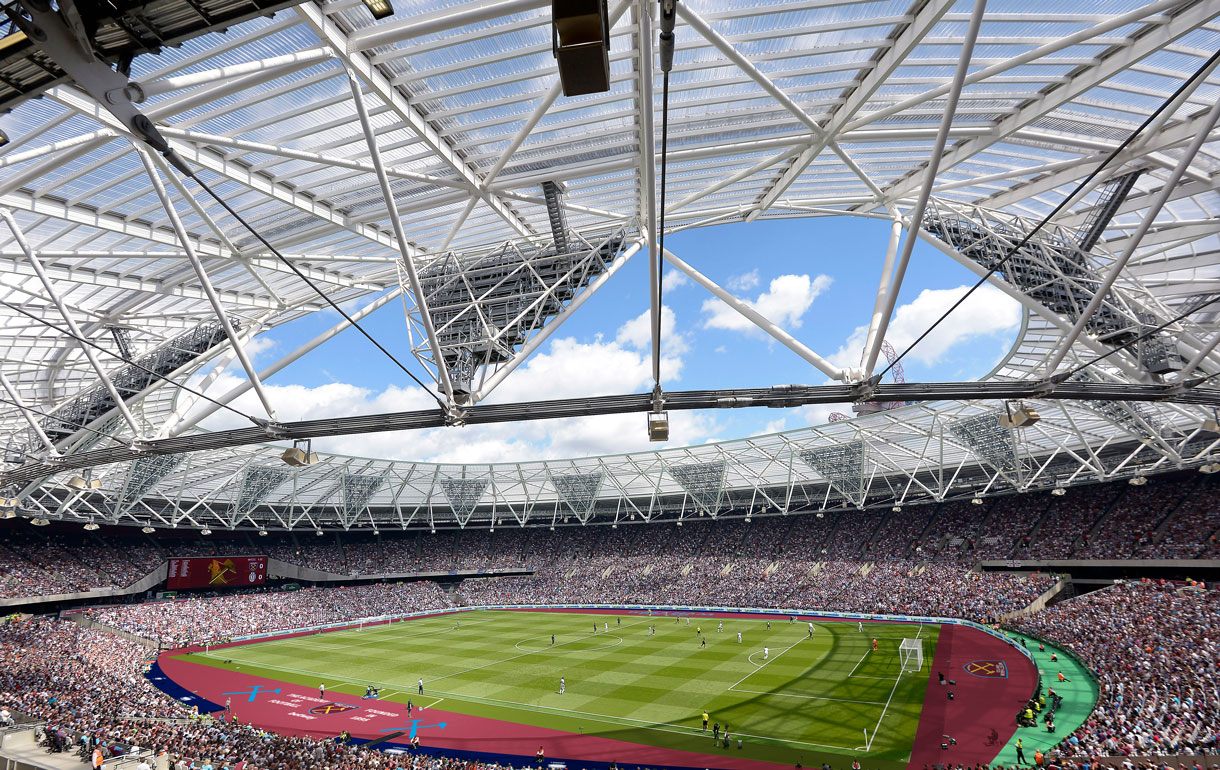
FROM:https://en.wikipedia.org/wiki/London_Stadium
FROM:Transformation of the former London 2012 Olympic Stadium
FROM:Stadium Drone – West Ham United – Upton Park and London Stadium
Don’t you think it’s addictive?
Want to know more about the beauty of architecture?
Come and join our members to explore the beauty of architectural design.
覺得看得不過癮嗎?
想要知道更多建築之美嗎?
快來加入我們的會員,一同探索建築設計之美。
The above article is purely for appreciation and sharing purposes, as well as the construction of new technology and the public can be in-depth understanding of the information at the same time there are sources, will be able to query, no use of the document as a commercial transaction, if illegal, please inform the We will immediately remove the site, thank you for cooperation.
以上文章純粹作為欣賞及分享用途,以及將建築新型技術傳遞給與大眾能夠深入了解,同時資料還有來源,將可查詢,絕無使用該文件資料作為商業交易行為,如有違法請務必告知該網站我們將立即處理撤除,謝謝合作。

